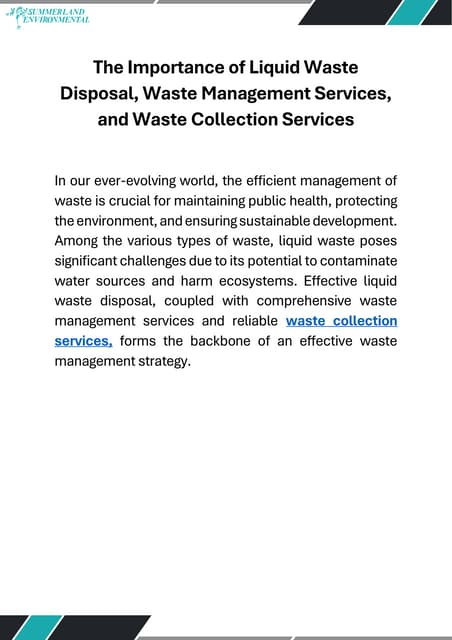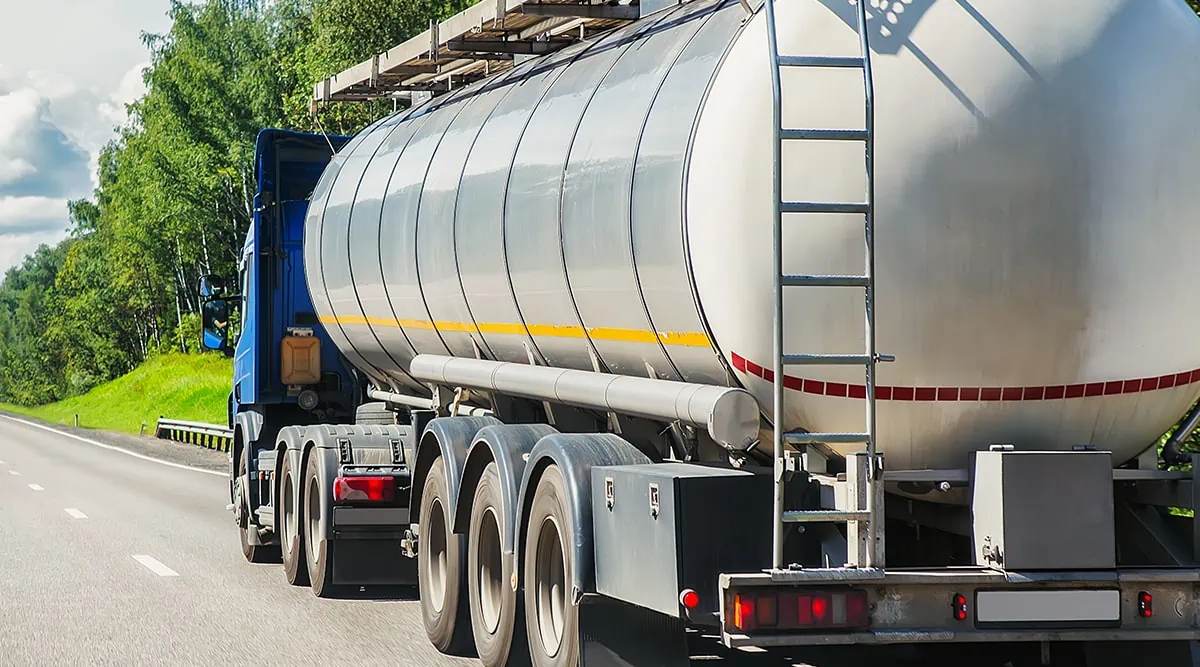Some Known Facts About Reclaim Waste.
Some Known Facts About Reclaim Waste.
Blog Article
The Ultimate Guide To Reclaim Waste
Table of ContentsWhat Does Reclaim Waste Do?The Single Strategy To Use For Reclaim WasteAbout Reclaim WasteThe Reclaim Waste StatementsThe Reclaim Waste StatementsFascination About Reclaim Waste

Never put unsafe compounds down sinks, commodes or stormwater drains pipes Materials consisting of gas, oil, oil, pesticides and herbicides, and solvents such as paint strippers should not be put down sinks, commodes or stormwater drains. These substances are difficult to remove in the sewer treatment procedure and cause air pollution problems in our local rivers.

Although liquid waste is a term that covers a broad selection of products, there's an excellent reason why leaving its disposal to the professionals is suggested. Liquid waste is non-solid product that has no further usage and must be treated and disposed of according to regional, state and government guidelines.
The Best Strategy To Use For Reclaim Waste
Although examples of liquid waste can consist of wastewater, fats, oils or grease, used oil, liquids, solids, gases or sludges and unsafe home fluids, there are some that are taken into consideration to be much more unsafe than others when it pertains to the environment and the health and wellness of animals and human beings alike. It's because of this that each state and region have actually stringent regulations linked to fluid waste administration.
Liquid waste can be saved in holding storage tanks or packaged in drums, intermediate bulk containers or accepted tiny containers before either being dealt with or gotten rid of by means of outsourced vacuum cleaner vehicles. Offered the nature of the materials, liquid waste can not go in the basic waste stream and there are rigorous regulations on how to deal with it appropriately.
(http://www.askmap.net/location/7161699/australia/reclaim-waste)Depending upon a determination of the degree of threat, it may be essential to remediate those sites. Additionally, unsafe fluid chemical wastes are controlled waste and has to be tracked in accordance with the state waste regulation. Under the chain of custody and responsibilities, proprietors are liable and accountable for waste created by a company.
One of the core applications for superabsorbent polymers (SAPs) is fluid waste solidification. industrial wastewater treatment. SAPs are made use of by waste management experts to stop possibly unsafe fluids from going into rivers, groundwater aquifers, and various other delicate settings. Because liquids can rapidly transfer impurities right into ecological receptors and potentially contribute to geotechnical failures, fluid wastes are nearly constantly banned from disposal in land fills
Getting The Reclaim Waste To Work
Generally, totally free fluids are liquids that separate from the solid part of waste material. Fluid waste can consist of the following: HDD mud and cuttings Garbage dump leachate Wastewater therapy sludge & biosolids Dug up debris Oil and gas drill cuttings Clearing up pond filth Hydro Excavation slurry Coal burning residuals/ash Tank base sludge Concrete grinding/polishing slurry Related Article: For a useful example of free fluids dividing from waste material, consider the adhering to circumstance: A waste administration professional lots a dump associate sludge from a wastewater therapy plant's oygenation container, during a regular upkeep event.
Nonetheless, when the vehicle driver gets to the land fill, he notices water seeping from the sludge and putting from the dump truck. The tons was declined by the garbage dump and the driver was compelled to throw away the waste as a fluid waste at a special facility, which enhanced the disposal costs enormously.
We also need to be responsible for the correct disposal of our waste materials. It is not sufficient that we pay waste disposal companies to take care of our rubbish.
Facts About Reclaim Waste Uncovered

Segregating your waste can begin inside the home. Segregate completely dry and liquid waste as well as edible waste, eco-friendly and non-biodegradable materials.
Layer the bottom with dirt to absorb the damp waste. Layer the compost with wet and completely dry waste as well as soil to keep a balance in between the damp and the dry.
Unknown Facts About Reclaim Waste
To facilitate faster decomposition, you can also include semi composted dirt to the compost. If you discover the smell is becoming also solid, include added newspapers and paper waste or add even more holes to the compost container to maintain the equilibrium of the waste materials.
We also need to be liable for the appropriate disposal of our waste materials. It is not sufficient that we pay waste disposal business to take treatment of our rubbish.
Our waste, our duty. Have you ever before wondered what occurs to your liquid waste after it's gathered? Did you recognize that liquid waste can be reused? As responsible residents, you ought to understand what takes place to your rubbish and where it pursues it is taken away from you. Understanding the fluid waste removal procedure is necessary in helping you to segregate your waste.
Excitement About Reclaim Waste
The ideal area is a good outside space with a lot of sunshine and air. Segregate your waste. Segregating your waste can begin inside the home. Segregate dry and liquid waste in addition to edible waste, naturally degradable and non-biodegradable products. Constantly keep the lid on your bins to avoid bugs, worms, flies, and undesirable odours.
You can make use of old garbage can, bucket, garden pot or old plastic drums. Drill 4 to 5 openings in the container so the air can circulate. Layer all-time low with dirt to soak up the damp waste. Start the composting procedure. Layer the garden compost with damp and completely dry waste along with dirt to maintain an equilibrium between the wet and the dry.
To help with faster disintegration, you can additionally add semi composted soil to the compost. If you see the odor is coming to be too solid, add added newspapers and paper waste or add even more openings to the compost container to keep the look at more info equilibrium of the waste materials.
Report this page